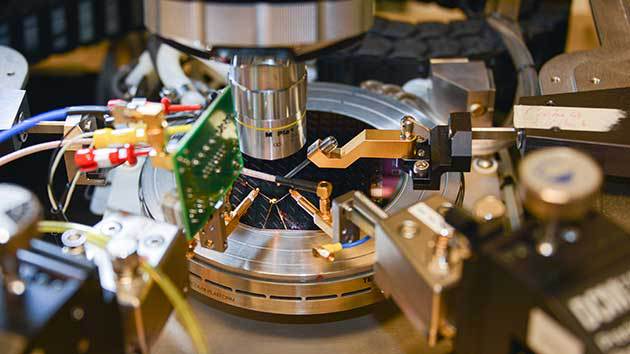The machine. HP's new computer architecture

HP Memristor Experiment
HP expects to revolutionize the IT market. A project called The Machine is an attempt to develop a new computer architecture, with a new operating system and a new type of memristor RAM, which are free from the limitations of modern DRAM and flash memory and require ultra-high data transfer speeds.
Over an ambitious project, 75% of HP Labs staff work, writes BusinessWeek.
The company claims to bring new technology to the market over the next few years. HP’s reputation is at stake, too many resources are invested in this project. “We think we have no choice,” said Martin Fink, technology director at HP Labs, who announced HP’s grandiose plans at last week’s conference.
Decades ago, developing from scratch a new computer architecture was not something special. This was done by Intel, IBM and the same Hewlett-Packard. The development of each such project opened a potentially new market, and the developers skimmed the cream. Now HP Labs wants to do the same.
The Machine project began two years ago when Fink was appointed as the technology director of HP Labs. Architecture involves the use ofmemristors as RAM cells. A memristor is a passive element in microelectronics that can change its resistance depending on the charge flowing through it (in its current form it is made from tantalum oxide). Theoretically, it can replace transistors in microelectronics, should be more capacious and faster than modern flash memory and DRAM. The memristor “remembers” the passing charge, so it saves information even when the power is off. This will make the PC architecture more compact by abandoning unnecessary components. The memory information density on memristors is so much higher than existing technologies that, according to HP Labs, the data volume of a modern data center can be placed in several server racks!
In addition to memristors, The Machine project provides for the use of a data bus using silicon photonics technologies, that is, the signal is transmitted by a laser, and not through copper contacts.
Memristors are used both as RAM and as a data storage device, which significantly increases the speed of data exchange with the CPU.
Little is known about Machine OS yet. Just that it will be open source and should take full advantage of the new hardware. A separate development team at HP Labs is working on creating a Linux distribution for the same purposes, another group is creating an Android version.
The Machine project does not have a clear deadline: developers say that the product can be released in 2017 and at the end of the decade.
In general, romantics who believe in revolution have not yet been translated into the IT business. Looks like Martin Fink is one of them. At the same time, independent analysts look with great doubt at the HP experiment, although they hope that it will succeed.
2010 HP Labs Memristor Key Presentation
